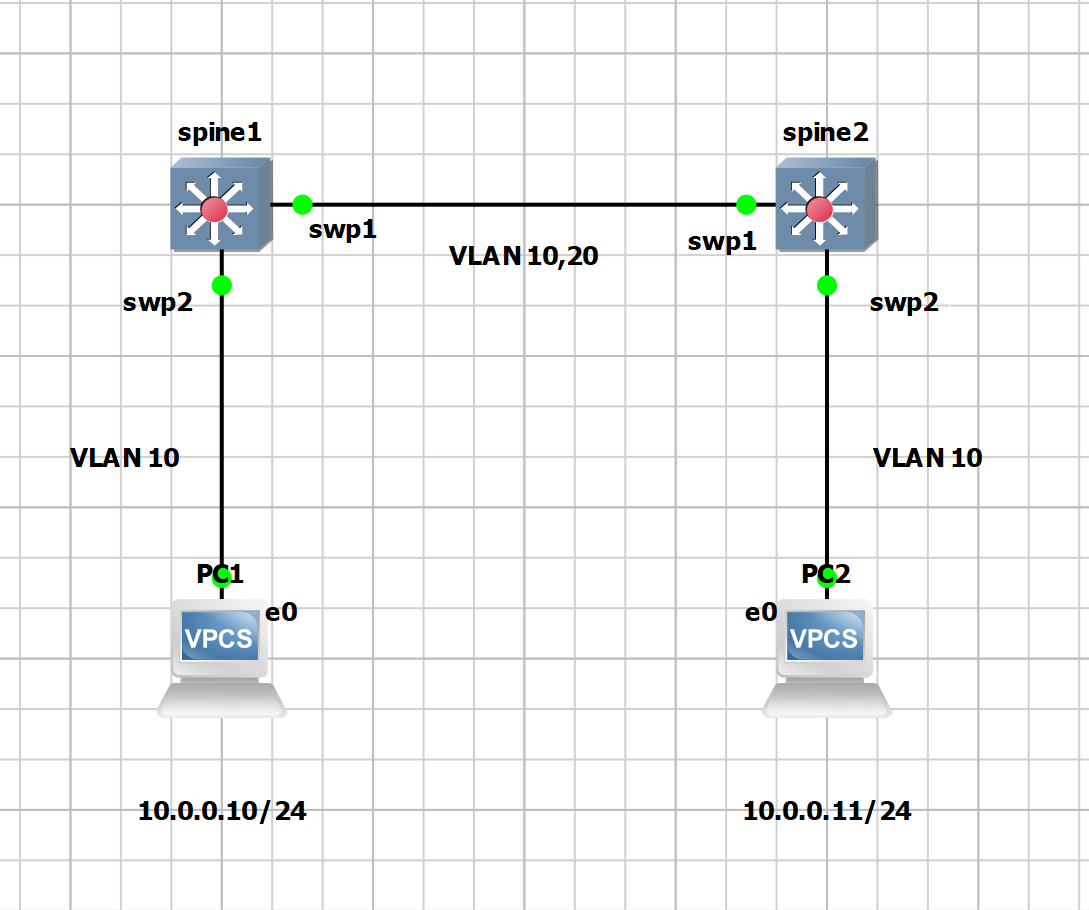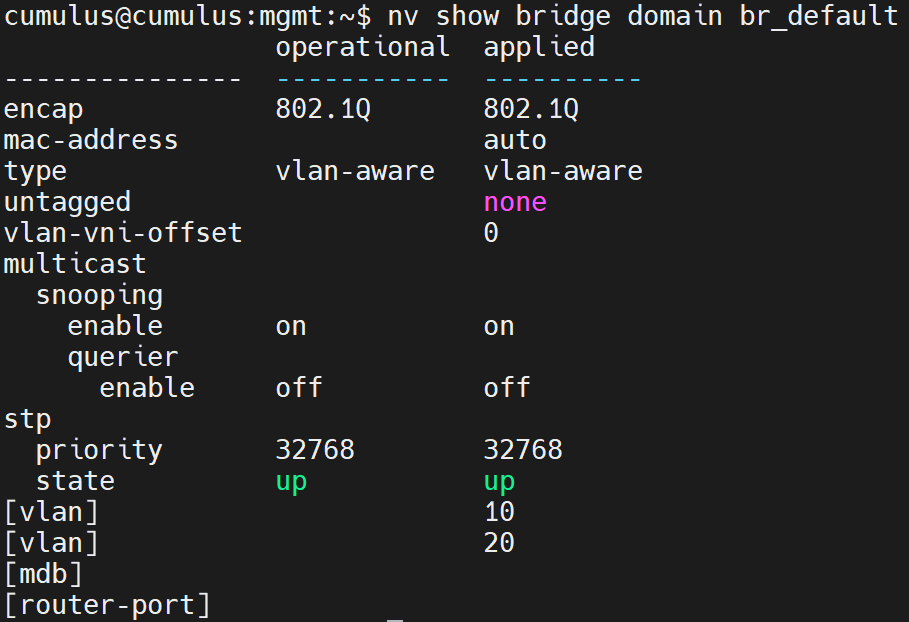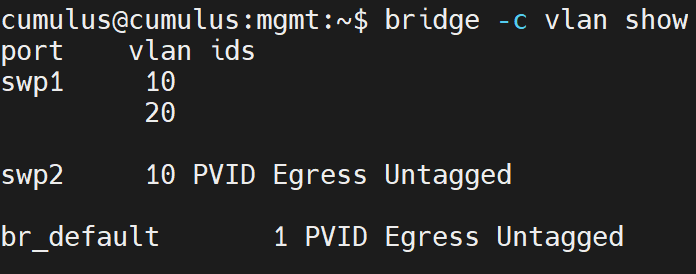Bridging
Introduction¶
This lab is for gaining familiarity with basic L2 functionality on the Cumulus platform.
Topology¶
This is the network topology used in this lab:
 PC1 and PC2 are two clients in the same L2 domain (VLAN 10) that want to communicate with each other.
PC1 and PC2 are two clients in the same L2 domain (VLAN 10) that want to communicate with each other.
Bridging on Cumulus¶
Since Cumulus is based on Debian Linux, it uses the traditional concept of a Linux bridge. Meaning it behaves like a virtual switch and interconnects different network interfaces on the same host. Linux bridging supports VLAN filtering, which allows us to configure different VLANs on the bridge port.
cumulus@cumulus:mgmt:~$ nv set interface swp1-2 bridge domain br_default # (1)!
cumulus@cumulus:mgmt:~$ nv set bridge domain br_default vlan 10,20
cumulus@cumulus:mgmt:~$ nv set bridge domain br_default untagged 1
cumulus@cumulus:mgmt:~$ nv set interface swp1 bridge domain br_default untagged none # (2)!
cumulus@cumulus:mgmt:~$ nv set interface swp2 bridge domain br_default access 10 # (3)!
cumulus@cumulus:mgmt:~$ nv config apply
- Cumulus has an existing bridge called br_default, with no ports assigned.
- Drop untagged frames on swp1.
- Set swp2 into access mode, meaning VLAN 10 becomes the PVID (ingress) and egress will be untagged.
Repeat this configuration on the second switch and bridging should be functional.
Verification¶
- Hosts can now ping each other:

- Output for bridge domain br_default:

- VLAN filter list for links:
